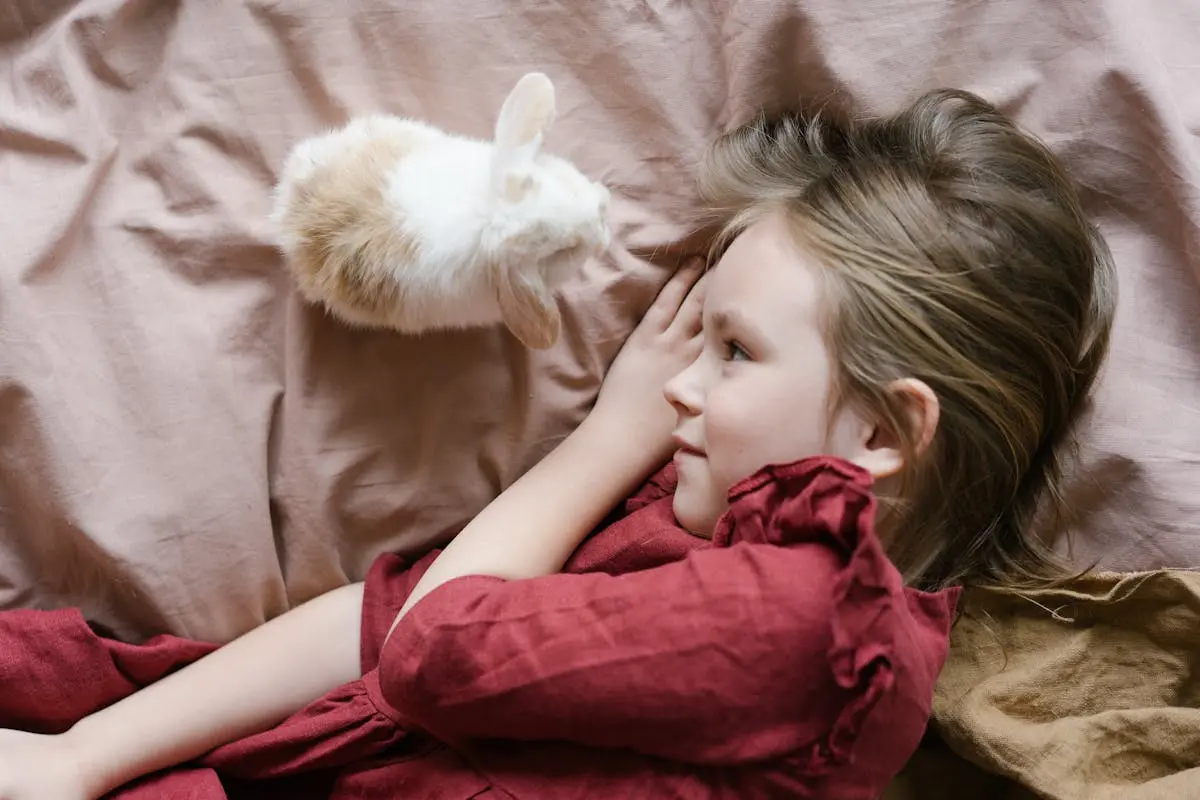Introduction to Therapy Animal Visits in Education
Bringing therapy animals into educational settings isn’t just about the feel-good factor; it’s rooted in science. Experiments have shown that the presence of therapy animals can significantly decrease stress and anxiety levels among students. This calming effect enhances students’ ability to focus, absorb, and retain information. Basically, when a dog, cat, or even a rabbit enters a classroom, it’s not just excitement in the air; it’s an invisible boost to the learning environment. Therapy animals have been trained to provide affection and comfort to people in various settings, including schools. Their visits aim to improve the emotional well-being of students, which is a critical foundation for effective learning. Whether it’s reading to a dog to improve literacy skills or simply petting an animal to reduce exam stress, the benefits are tangible. It’s not all about the warm fuzzies; it’s a strategic approach to create a more conducive learning atmosphere.
The Types of Animals Used in Therapy Visits
When you think of therapy animals, dogs might spring to mind first. It’s true, dogs dominate this space because of their widespread availability and the ease of training them. Yet, they’re not the only animals helping out. Cats, albeit less common, have their place, especially in settings where a calmer presence is desired. Horses, too, are part of this circle. Known as equine therapy, it’s great for students who might benefit from the unique brand of support these animals can offer, often outside in nature. Don’t overlook smaller companions like rabbits and guinea pigs. Their size makes them perfect for a gentle, hands-on interaction that can be comforting and less intimidating for kids. Birds, particularly parrots, are on the list as well. Their ability to mimic words isn’t just entertaining. It can be a bridge to communication for those who find verbal interaction challenging. Each animal brings its own special blend of comfort, teaching moments, and therapeutic benefits into the educational environment, making the learning experience richer and more accessible to students of all needs.
How Therapy Animals are Integrated into School Programs
Schools are now welcoming therapy animals into classrooms and seeing positive changes. These animals, often dogs or small mammals, are getting involved in reading programs, special education classes, and stress relief sessions. Here’s how it typically goes down: A trained therapy animal, along with their handler, visits a classroom. The visit might be regular, like every week, or scheduled during specific times like exam seasons for stress relief. During their visit, the therapy animal participates in various activities depending on the school’s curriculum. For example, in reading programs, children might read out loud to the dog, which can boost their confidence and interest in reading because they perceive the dog as a non-judgmental listener. In special education classes, the therapy animal helps to calm the students, enhance communication skills, and even improve social interactions among students. Teachers and therapists often report a visible increase in motivation and a decrease in stress levels among students when these animals are present. Simply put, therapy animals are becoming essential allies in making the school environment more engaging, less stressful, and more inclusive.
The Psychological Benefits of Therapy Animal Visits for Students
Therapy animals visiting schools do more than just put smiles on students’ faces. They bring a host of psychological benefits that are hard to match with regular teaching methods. First up, they reduce stress and anxiety. Imagine a room full of deadlines and tests, now bring in a friendly dog. The atmosphere changes immediately. Students relax, their hearts beat slower, and the room’s tension fades away. These animals also boost self-esteem. Children who struggle in social situations or learning find a non-judgmental friend in therapy animals. This interaction can make them feel more confident and valued. Improved focus and attendance is another perk. Classes with therapy animal visits see students who are more engaged and excited to come to school. Lastly, empathy and social skills get a big boost. Caring for and interacting with another creature teaches respect, compassion, and teamwork. So, therapy animals are not just a nice break from the books; they’re a tool that fosters a healthier, happier, and more engaging learning environment.
Enhancing Social Skills Through Interaction with Therapy Animals
Bringing therapy animals into schools isn’t just a cute idea; it’s a powerful way to boost kids’ social skills. Here’s the deal: When kids interact with a friendly dog, cat, or even a rabbit, they’re not just having fun. They’re actually learning how to communicate better, share attention, and show empathy. It’s like, while they’re petting and talking to these animals, they’re practicing how to be better friends and classmates without even realizing it. Animals don’t judge; they just listen and love unconditionally. This means kids can practice their social skills in a safe, stress-free environment. Plus, it’s proven that children can feel more relaxed and open when an animal is present, which makes them more likely to participate and engage with others. So, when we talk about using therapy animals to enhance learning, we’re not only talking about academic learning. We’re talking about learning how to be better humans.
Emotional Support: Therapy Animals as a Calming Presence
Therapy animals, like dogs or cats, bring a kind of magic into a classroom. Just by being there, they help everyone feel more relaxed. Think about it. When a friendly dog walks in, it’s hard not to smile or feel a bit happier, right? That’s because animals have a special way of making us feel calm without even trying. For students who might feel stressed about school or personal things, these animals are like a quiet friend who’s there to say, “It’s okay.” They don’t need words to do that; their presence does the talking. And it’s not just about feeling good for a moment. When students are more relaxed, they can focus better, think clearer, and even get along with others more easily. It’s like the animals help turn down the noise in their heads so they can pay attention to learning and growing. This is why having therapy animals visit schools is such a powerful thing. They’re not just pets; they’re like calm, four-legged teachers who teach without a lesson plan.
Case Studies: Successful Therapy Animal Programs in Schools
Schools across the country have seen real benefits from integrating therapy animals into their education programs. For example, a middle school in Washington introduced a program with therapy dogs to support students with anxiety and stress. The result? Lower absenteeism and improved overall mood among students. Another case study from a primary school in California featured therapy rabbits to help young children develop social skills and empathy. Teachers reported a noticeable increase in kindness and cooperation in the classroom. In a high school in Illinois, bringing in therapy cats for exam periods reduced test anxiety and fostered a calming environment, leading to better performance on exams. These examples show how therapy animals can make a significant impact on students’ well-being and academic success.
Addressing Safety and Hygiene Concerns in Therapy Animal Visits
Bringing animals into schools sounds cool, right? But, it’s crucial to talk about safety and hygiene when it comes to therapy animal visits. First things first, all animals coming into schools need to have their vaccinations up-to-date. This is non-negotiable. Plus, they should pass a health and behavior test. We don’t want any surprises. Another key point is having a clean-up plan. Accidents happen, but being ready means schools stay clean. Schools also train staff and students on how to interact safely with the animals, avoiding any issues. Remember, the goal is to make sure everyone – both two-legged and four-legged – stays safe and happy during these visits.
Training and Certification for Therapy Animals and Handlers
To bring therapy animals into schools, both the animals and their handlers must go through specific training and achieve certification. This ensures they’re prepared for the unique school environment and can positively impact students’ learning and wellbeing. The training for therapy animals focuses on socializing them to be calm and gentle around children and to adapt to various school settings without getting scared or aggressive. Handlers, on the other hand, learn to read their animal’s cues and manage them effectively in crowded or noisy situations. Certification usually involves passing a behavioral test set by organizations like Pet Partners or Therapy Dogs International. These organizations verify that the animal-handler teams are safe, reliable, and ready to contribute to educational settings. Remember, the goal is to create positive interactions that foster a supportive learning environment, so ensuring the teams are well-prepared is crucial.
Steps to Implementing a Therapy Animal Program in Your School
To start a therapy animal program in your school, you first need to chat with your school leaders. Get their thumbs up. After that, reach out to professionals who know tons about therapy animals. These experts can give you the lowdown on what works best. Next up, pick the right animals for your school. Not every furry friend is cut out for this. You want animals that are cool and calm around kids. Then, plan out how these visits will fit into your school day. You don’t want them messing up the normal school schedule. Lastly, make sure everyone knows what’s happening. Teach students and staff how to interact with these animals safely. This way, everyone gets the most out of these visits without any hiccups. Keep it straightforward, and you’ll see smiles all around your school in no time.





